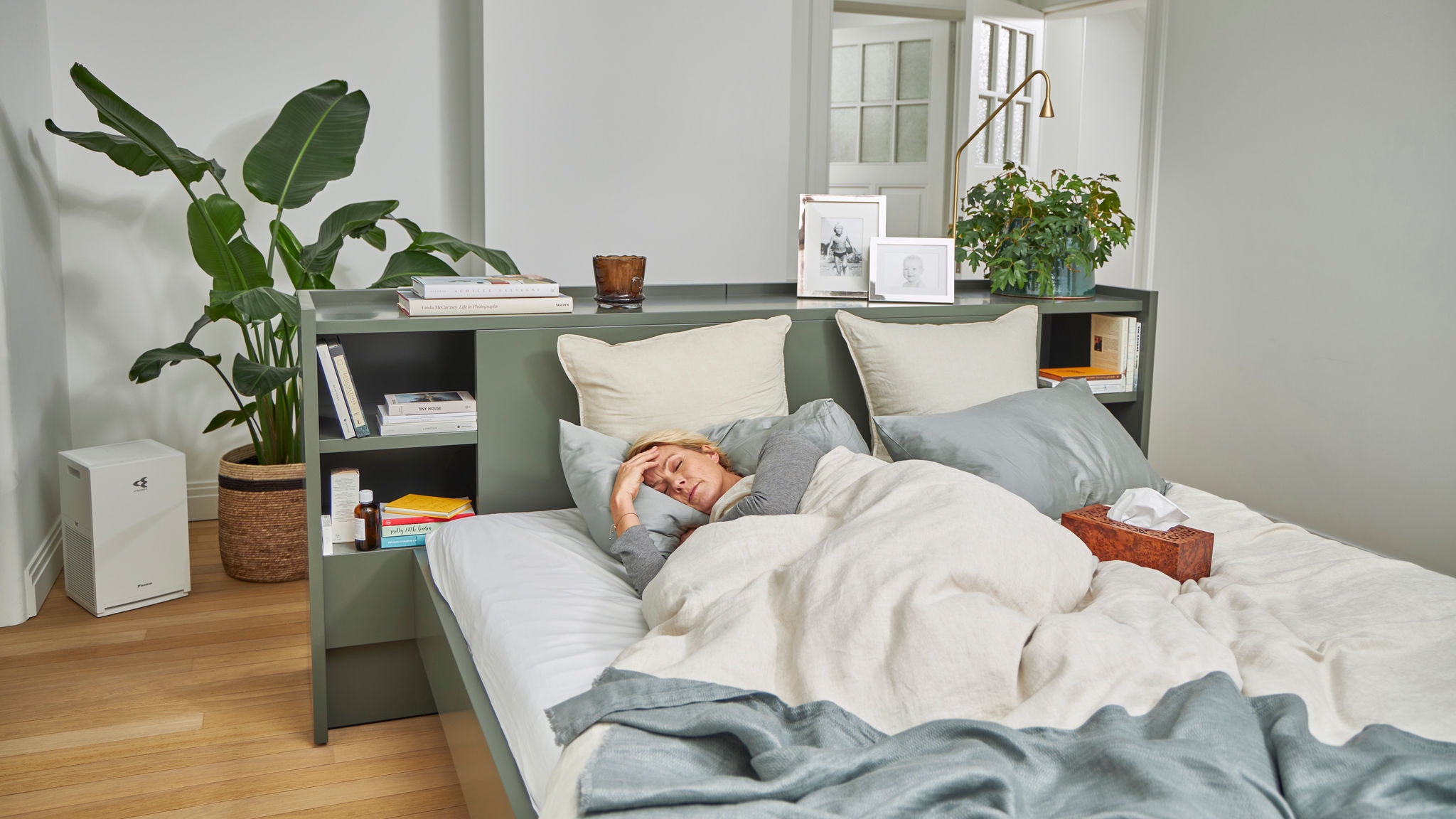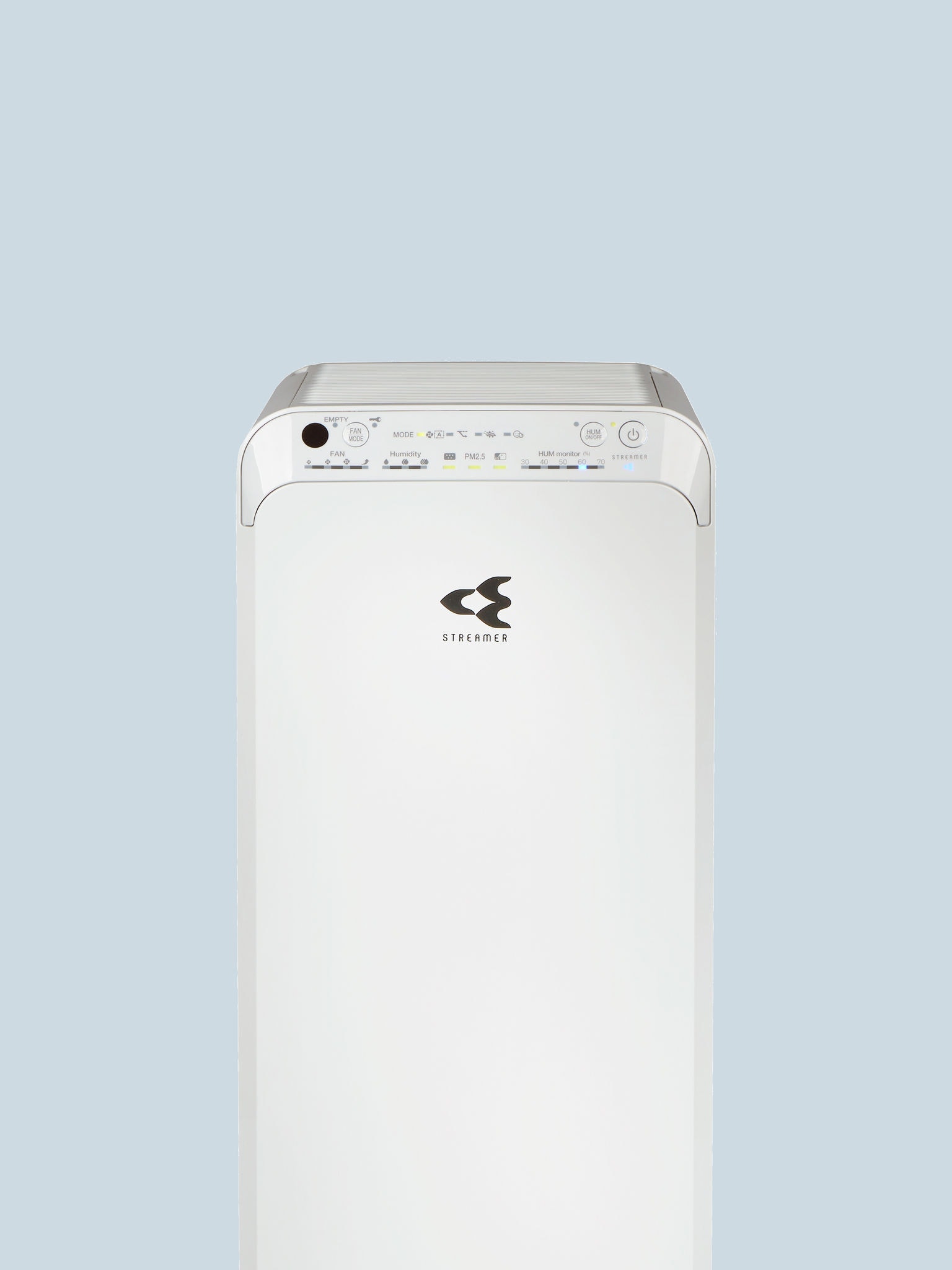Allergy Management Tips
Everything you need to know about managing common allergens in the home

From pollen to dust mites, mould spores and animal dander, potential allergens are all around us. For those that suffer from allergies, the symptoms can be irritating at their mildest and debilitating at their worst. Sneezing, skin irritation, wheezing, runny eyes and irritated throat and eyes can all be triggered by exposure to common domestic allergens found in the home.
The route most of us take to managing these allergens is via the pharmacist or doctor. Most common air-borne allergens can be controlled through allergy relief tablets or steroids in more severe cases, but there are measures we can take to safeguard ourselves and our homes from this ‘invisible enemy’ that we often cannot see or feel but which cause untold misery on a daily basis if not addressed.
Which allergy do I have?
Firstly, let’s look at the different types of common allergy and where they come from.
Hay fever
Hay fever is one of the most common allergies, causing rhinitis, a feeling of drowsy ‘heavy headedness’ and itchy eyes, and is triggered by pollen, either tree or grass. The prevalence of pollen allergy in the European population is estimated at 40% (D’Amato et al., 2007), making it one of the most common allergens in Europe. Children can be hugely impacted particularly by the sleep disturbance of sneezing and coughing, which in turn has an impact on their academic performance. In fact, a 2007 study (Education for Health) showed that teenagers with hay fever symptoms were 40% more likely to drop a grade between their mock and final exams.
It’s useful to keep a pollen calendar to establish which kind of pollen you react to – it varies widely between sufferers, and once you’ve established which pollen triggers your allergy you can take whatever steps you can to avoid it. Sadly, according to the European Climate and Health Observatory, global warming is extending ‘hay fever season’ as warmer temperatures have created a shift in pollen production. At the same time higher temperatures are helping the rapid acceleration of some invasive species that are particularly virulent pollen triggers, for example ragweed, which is making its way across Europe. When you couple this with the fact that air pollution can heighten the allergenicity of certain pollen species, including birch, one of the most allergenic tree pollens, then we can see the problem faced with those who suffer with hay fever is extremely unlikely to improve.

Pet allergies
Pet allergens, caused by the dander of domestic pets like cats, dogs and guinea pigs etc living in the home particularly affects children. 26% of European adults attending allergy clinics for suspected allergy to inhalant allergens were shown to be sensitive to cats and 27% to dogs (Davila et al., 2018). This can be a particularly difficult allergen to deal with as our pets are part of the family and our need, as well as theirs, to be close to them should be respected – for a child not to pet the family dog is a genuine loss of quality family closeness.
House dust mite allergy
A house dust mite allergy can produce a significant skin irritation and a great deal of misery, all caused by something only a quarter of a millimetre long! House dust mites feed on the dead skin cells that we shed every day. For a house dust mite, the ideal conditions are warm and humid conditions like bedding, carpets, soft furnishings, and clothing. House dust mites aren’t any indication that your home is dirty or badly kept; house dust mites are always with us and a fact of life, no matter how clean or tidy our houses are.
If you are one of the people allergic to house dust mites, it’s most likely that you are not actually allergic to the mite itself. Rather unpleasantly, it’s the house dust mite’s droppings that you allergic to. Their droppings contain a protein that is a trigger to those with the allergy. Each tiny house dust mite produces 20 droppings every day, and even after the mite has died, you will still react to the droppings.
Mould spore allergy
Mould spores found in homes with high indoor humidity or poor ventilation are also common culprits for allergic reactions. Some of the most common moulds that cause allergies include alternaria, aspergillus, cladosporium and penicillium, and if you have a family history of allergy or asthma you are more prone to develop an allergy to mould. Although you have to be in a specific industry to be exposed to high mould exposure, like farming, dairy work, logging, baking, millwork, carpentry, greenhouse work, winemaking or furniture repair it’s worth bearing in mind that mould spores are readily found in the home as mould can grow virtually anywhere damp, including domestic cellars, behind walls, in showers or on carpets. Leaky pipes causing water seepage are common causes for domestic mould and again, as climate change affects our homes and living conditions and flooding becomes more of a real risk, we are faced with our exposure to mould spores becoming more likely.



What can I do?
So, what can we do if we’re allergic to any of these common household allergy triggers?
Gaining knowledge about our allergy trigger always helps. Keep a diary – when was your allergy at its worst, what had changed in the home to cause it, what did you do to alleviate it, etc.
Hay fever tips
- For hay fever it's a good idea to wash your bedding frequently to remove pollen and dust. Pillowcases in particular need regular laundering as pollen left by the hair can then be breathed in.
- Keep your doors and windows closed to keep pollen out of the room and brush your hair when coming in to the home from outside to remove pollen and other potentially allergenic particles.
- Shower at night to wash away pollen or other allergens and ensure you’re not taking them to bed with you.
- Wearing sunglasses when outside, even in the garden, can help reduce itchy eye sensations and applying a little petroleum jelly around the nostrils can help trap pollen and avoid it entering the airway.
House dust mite tips
- Washing bedding is also a requirement for dealing with house dust mites. Barrier covers that stop allergens coming into contact with the skin should be used on all mattresses, duvets, and pillows.
- It's also a good idea to wash all sheets and blankets every week on a 60°C wash. If your child suffers with the allergy and has a bunk bed, ensure they sleep on to the top where the allergen can’t fall on them.
- Hard floors are a better idea than carpeting and use a high temperature steam cleaner on carpeted areas.
- Remove as many unnecessary soft furnishings as possible, use regularly washed light cotton curtains and wash soft toys often, again at 60°C.
Pet allergy tips
For pet allergies, a few simple techniques will help alleviate the problem.
- Remove as much obvious pet hair and dander as you can from your furniture by cleaning and dusting regularly – many vacuum manufacturers now offer machines designed for homes with pets.
- Grooming your pet is a great idea to loosen and remove dead hair that might cause an allergy problem, but do it in the garden, and wash your hands after you’ve stroked your pets, being careful not to touch your face before your hands are clean.


Cleaner healthier air with Daikin Air Purifiers
The single and simplest device to ensure your home and household enjoys clear, clean air is a Daikin Air Purifier, specifically designed to remove these invisible harmful particles. The Daikin Air Purifier MC55W has also been tested as allergy friendly by renowned institutions like ECARF and the British Allergy Foundation, and also proved effective against respiratory viruses by Institut Pasteur de Lille.
Our Daikin Air Purifier comes with both auto mode and pollen mode. The auto mode senses the PM levels in the room and starts its air purification process accordingly so you can rest assured that potential allergens are being removed without your intervention. It also comes with an anti-pollen mode, which works by creating a gentle air turbulence in the room. This catches and deals with the pollen before it has a chance to land on the floor of your home.
Using an electrostatic HEPA filter with your Daikin Air Purifier can remove 99,97% of the fine harmful particles (0.3μm) that can trigger allergies. It also comes with a market leading lifetime guarantee of 10 years. This means that if you invest in a Daikin Air Purifier this season for your allergies, then you would not need to change the filter for the next 10 years.
With features like these the Daikin Air Purifier can purify the air in your home to a volume of up 82m². As is usual with Daikin this is the best volume available in the current marketplace. In addition, our four-stage filtration system means you can rest assured that you are fighting the invisible threat of allergens with Daikin Air Purifiers and offering the very best protection to your family and home. Comfort and peace of mind with Daikin, as always.
Buy the right air purifier to fight your allergies.